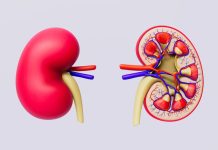
In a new study, researchers found that prescription drug prices in the United States are much higher than in other nations, with prices in the U.S. averaging 2.56 times those seen in 32 other nations.
The gap between prices in the U.S. and other countries is even larger for brand-name drugs, with U.S. prices averaging 3.44 times those in comparison nations.
The researchers also found that prices for unbranded generic drugs—which account for 84% of drugs sold in the U.S. by volume but only 12% of U.S. spending—are slightly lower in the U.S. than in most other nations.
The research was conducted by a team at RAND Corporation.
In the study, the analysis is based on 2018 data and provides the most up-to-date estimates of how much higher drug prices are in the U.S. as compared to other countries in the Organisation for Economic Co-operation and Development.
The team used manufacturer prices for drugs because net prices—that is, the prices ultimately paid for drugs after negotiated rebates and other discounts are applied—are not systematically available.
Even after adjusting U.S. prices downward based on an approximation of these discounts to account for these discounts, U.S. prices remained substantially higher than those in other countries.
The one consistent area where prices were lower in the U.S. was generic drugs, where prices were 84% of the average paid in other nations.
The team also found that among G7 nations, the United Kingdom, France and Italy generally have the lowest prescription drug prices, while Canada, Germany and Japan tend to have higher prices.
They say that conducting such comparisons requires a variety of decisions and assumptions to calculate price indexes.
The U.S. had consistently higher drug prices regardless of how the researchers calculated price indexes and treated outliers in the data.
One researcher of the study is Andrew Mulcahy, a senior health policy researcher at RAND.
Copyright © 2021 Knowridge Science Report. All rights reserved.



